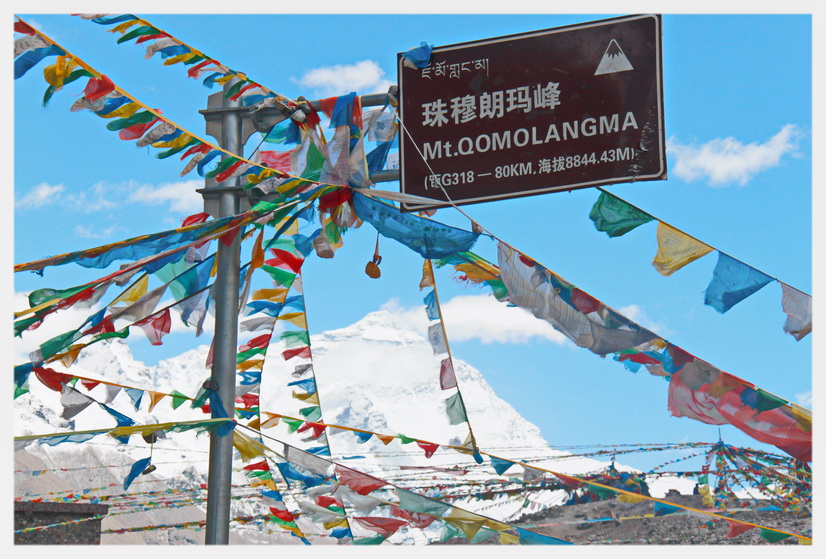Mount Everest, known as Qomolangma in China and Sagarmatha in Nepal, is the world’s highest peak. It’s part of the Himalayan range and straddles the border between Nepal and the Tibet Autonomous Region of China.
Its elevation is approximately 8,848 meters (29,029 feet) above sea level. Climbers and trekkers from around the world attempt to reach its summit, though it presents significant challenges due to its extreme altitude and unpredictable weather conditions. The base camps on both the north (Tibetan) and south (Nepalese) sides serve as starting points for these expeditions.
Visiting Mount Everest (Qomolangma) in China involves careful planning due to its remote location and challenging conditions. Here’s a general outline of how to visit:
- Permits and Restrictions: Obtain the necessary permits to enter the Tibet Autonomous Region, as the northern approach from China requires special permits. These permits are usually arranged by tour operators.
- Tour Operator: Choose a reputable tour operator that offers guided tours to Mount Everest Base Camp. They will help you with permits, transportation, accommodations, and guides.
- Transportation: Most visitors fly to Lhasa, the capital of Tibet, and then travel by road to Everest Base Camp. The journey involves several days of driving, passing through scenic landscapes and Tibetan villages.
- Acclimatization: Due to the high altitude, it’s crucial to acclimatize gradually to avoid altitude sickness. Spend a few days in Lhasa or other places at lower altitudes before heading to Everest Base Camp.
- Base Camp Visit: Drive to the Everest Base Camp on the northern side. You won’t be able to reach the actual summit without mountaineering experience, but you can explore the base camp area, take in the breathtaking views, and interact with climbers.
- Accommodation: Accommodations near Everest Base Camp are basic. Expect guesthouses or tent camps with limited facilities. Make sure to bring warm clothing, as temperatures can drop significantly, even in summer.
- Health and Safety: Be aware of altitude sickness and its symptoms. Stay hydrated and avoid overexertion. Consult a doctor before your trip and carry necessary medications.
- Respect Local Customs: Tibet has a unique cultural and religious heritage. Respect local customs, traditions, and Buddhist practices.
- Environmental Considerations: Practice responsible tourism by minimizing your impact on the environment. Follow leave-no-trace principles and respect the natural surroundings.
- Weather Considerations: The weather at Everest can be unpredictable. Be prepared for sudden changes in conditions and plan accordingly.
Remember that regulations and conditions may change, so it’s advisable to check with your chosen tour operator or official sources for the latest information before planning your visit to Mount Everest in China.
If you have any questions or queries, then please feel free to drop us a line.


